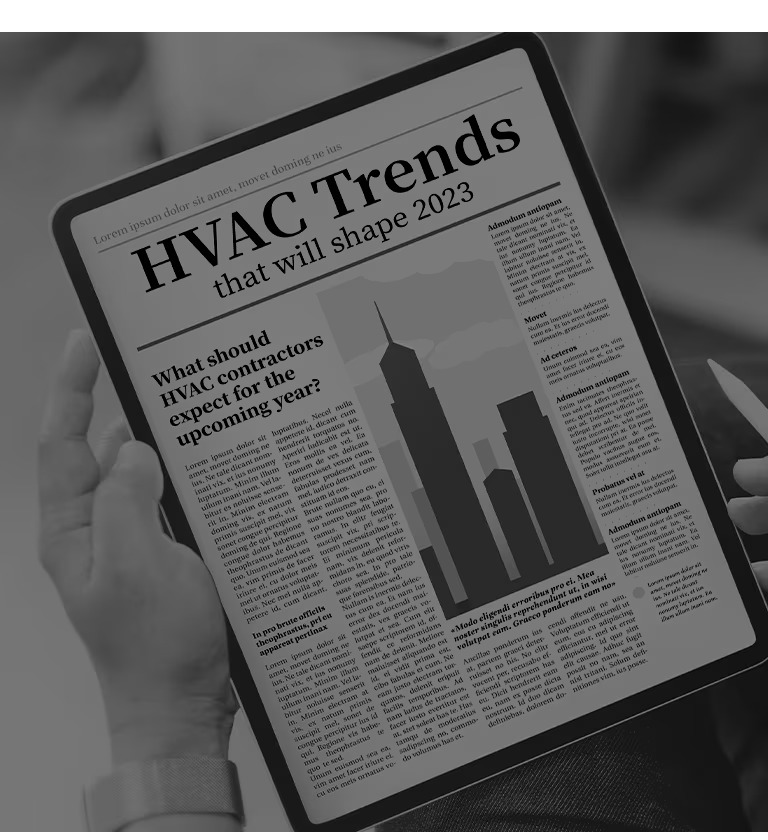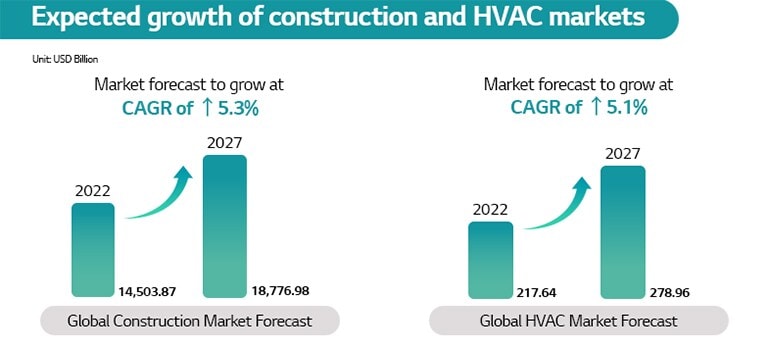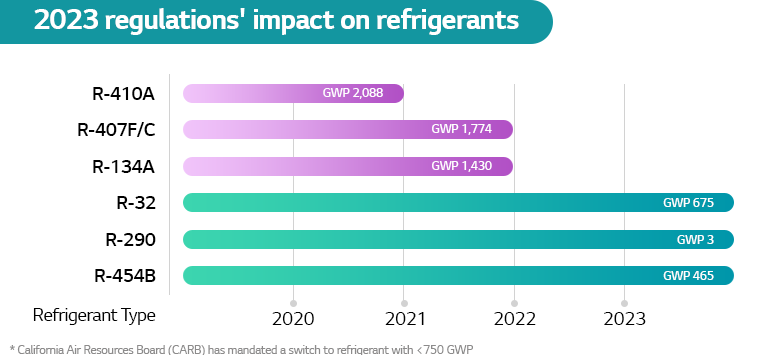We use cookies, including cookies from third parties, to enhance your user experience and the effectiveness of our marketing activities. These cookies are performance, analytics and advertising cookies, please see our Privacy and Cookie policy for further information. If you agree to all of our cookies select “Accept all” or select “Cookie Settings” to see which cookies we use and choose which ones you would like to accept.
With 2022 behind us, we’re looking forward to the year ahead.
HVAC is a dynamic and continuously changing industry that impacts many of us in our daily lives.
A. A boom in construction projects will bring about possibilities for growth in the HVAC industry.
B. As governments around the world continue to implement regulations for more eco-conscious HVAC solutions, consumers will look for more efficient HVAC systems.
C. The energy crisis in Europe and advancements in technology will promote the implementation of smart HVAC systems with AI applications.
D. Concerns over the new variants of COVID-19 will drive more effective air purification functionality.
If you’re an installer or consultant, join us as we take a look at HVAC industry trends for 2023 that can benefit you and your customers.
Constructing a Boom for the HVAC industry
Global construction and HVAC Market forecast
The construction sector contributes to a large part of the world economy and rapid urbanization is one of the key reasons this industry is ever-growing. According to a new report, the global construction market size is projected to grow at a CAGR (Compound Annual Growth Rate) of 5.3% between 2022 and 20271).
You might be wondering what this means for the HVAC industry; a new report forecasting CAGR growth of 5.1% for the HVAC industry between 2022 and 2027 has attributed this growth to the expansion of the construction sector as one of the main factors2). To put it simply, the growth of the construction industry will prove to be a boom for the growth of the HVAC sector. A boom in the industry will result in demand for HVAC professionals.
1) Construction market 2022-2027: A descriptive analysis of five forces model, market dynamics, and segmentation - Technavio (prnewswire.com)
2) Global HVAC Market Report and Forecast 2022-2027 (researchandmarkets.com)
Change for a Cleaner Future
1. Watch out for the SEE(R)
As most of you must be aware, new energy regulations created by the US DoE (Department of Energy) came into effect this year. The DoE has increased the minimum SEER (Seasonal Energy Efficiency Ratio) ratings for air conditioners and heat pumps. The minimum SEER rating for HVAC systems will go up from 13.0 to 14.0 in the north whereas, for the southern regions, the SEER rating will increase from 14.0 to 15.03). The SEER ratings have been revised to reduce the impact on the environment and cut down on the demand for energy. This step will not only benefit the environment but also economically benefit homeowners and business owners by increasing energy savings.
3) U.S. Energy Information Administration - EIA - Independent Statistics and Analysis
2. A Shift to Greener Refrigerants
2023 regulations impact on refrigerants
The change in the SEER ratings also brings about a shift to high-efficiency and low-GWP (Global Warming Potential) refrigerants. A good number of HFCF (Hydrochlorofluorocarbon) and HFC(Hydrofluorocarbon) refrigerants with high-GWP have been phased out in the last few years. In a bid to minimize the use of high global warming potential refrigerants, HFC refrigerants such as R134a, R410A, and R407C will be banned from use in the US from January 1, 20244). Instead, greener options such as R290 or R-454b5) will be available for manufacturers looking for clean energy alternatives. For those of you who are not familiar with the R290 refrigerant, it is a new refrigerant with a negligible ozone depletion factor and is currently used in the LG R1 Compressor.
4) US EPA confirms future restrictions on high-GWP refrigerants (heatpumpingtechnologies.org)
5) Upcoming Refrigerant Changes: How the R-454B (Puron Advance) Transition Affects You | Fire & Ice (indoortemp.com)
Smart HVAC for Better Indoor Environments
1. Smartphones? It’s Time for Smart HVAC
In a world that is advancing towards more convenience and less hassle, smart HVAC systems are taking over traditional HVAC systems. Smart HVAC solutions like smart thermostats can be remotely connected to your smartphones, laptops, or tablets and enable you to control and monitor temperatures from the comfort of wherever you are. This not only saves energy but also ensures that you don’t end up spending a fortune on your energy bills. With smart thermostats, you don’t have to worry about forgetting to turn your heating or cooling on or off.
Now, these systems do much more than a simple remote control, they have movement sensors that detect your presence, learn your routine, and adjust heating and cooling accordingly, saving you energy and money. Some thermostats also keep you updated with your energy consumption and costs. All in all, these smart devices are worth the investment and pay back in the long term.
However, if you are not interested in buying a smart thermostat, LG has something else for you; LG ThinQ and BECON Cloud. LG ThinQ-enabled devices can be remotely controlled from anywhere at any given time from a mobile device. You can find more information about these solutions by following the links below
2. The Future May be Ductless
Ductless systems are becoming the future of HVAC. They’re easier to repair and install. Also, ductless VRF units, for instance, are compact, good for diverse spaces, quiet, energy efficient, have fewer breakdowns, and can simultaneously heat and cool. VRF systems are also more efficient when it comes to constantly filtering, replacing, and purifying the air in buildings. But how important is indoor air quality in 2023? That is up for discussion in the next section.
3. COVID-19: Putting the ‘V’ in HVAC
Since the outbreak of COVID-19, air purification has become a salient selling point for HVAC systems. We are being hit by waves of new strains of COVID-19, making air purification an inevitable necessity. The global air purification market is projected to grow at a CAGR of 8.1% from 2022 to 20306) driven by the convergent evolution of COVID-19. Needless to say, considering the current challenges of the pandemic and air pollution, systems that heat and cool, and also purify air will not only be viable but also more sustainable options in the future. Expect to see an increase in air purification applications this year.
6) Air Purifier Market Size | Industry Report, 2022-2030 (grandviewresearch.com)
Now, we’ve discussed some coming trends in the HVAC industry for 2023. The future looks promising and the changes to come will improve our lives as a whole. The prospects are positive and so is LG’s commitment to provide you with the best HVAC systems.
*Products and solutions may vary according to country and operating conditions.
Contact Us
Please contact us for more information, and we will get in touch with you soon.


